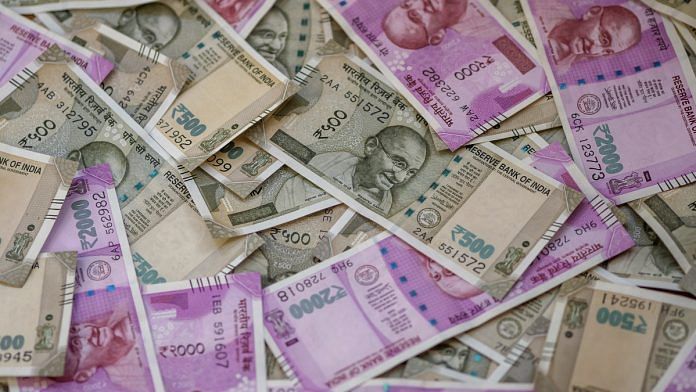New Delhi: Some of India’s foremost financial institutions risk being left behind in the transition from fossil fuels, and if current patterns of lending continue, India could be “locked” in carbon intensive development, a new study has found.
The study, which became available online 30 December, was collectively conducted by global think tank ODI, policy advisory not-for-profit Climate Bonds, and policy advisory on sustainable development auctusESG.
Transitioning to a low carbon development pathway means that loans and investments in carbon intensive assets, firms and sectors may not generate anticipated returns. India’s financial sector is “heavily exposed” to such risks, despite interest in expanding renewable energy generation capacity, the study found.
As of October 2022, India has an installed capacity of 172.72 gigawatts (GW) from non-fossil fuel sources — a figure that has more than tripled since 2015.
Coal, however, continues to dominate power generation, accounting for around 75 per cent.
Electricity production, which is the largest source of carbon emissions in the country, accounts for 5.2 per cent of all outstanding credit from Indian banks in carbon intensive sectors. However, only 17.5 per cent of this borrowing is by utilities that generate power exclusively from renewables or supply equipment and services for renewables,
the study found.
“With high average emission intensity and levels of indebtedness, firms in electricity production in India potentially face very high transition risks,” it said. “A handful of energy-intensive sectors such as cement, iron and steel, non-ferrous metals and civil aviation also have high emission intensities and levels of indebtedness. Firms in these sectors almost certainly pose a risk to their creditors as the low-carbon transition accelerates.”
According to the analysis, three-fifths of lending to the mining sector is for oil and gas extraction, while one-fifth of manufacturing sector’s debt is for petroleum refining and related industries.
India is the world’s fifth-largest economy and third-largest emitter of carbon. Its pledge to achieve net zero emission by 2070 will contribute substantially to global efforts in limiting global warming, the International Energy Agency has said, making its transition from fossil fuels relevant both nationally and internationally.
But India’s finance sector is woefully ill-equipped to handle the challenge. Of 10 large banks surveyed, only four collect information on environmental, social, and governance (ESG) risks, while none assess the physical risks of climate change, the study found.
The findings add to a previous research that found Indian banks weren’t keeping pace with the action necessary to stay on track to achieving the country’s climate goals.
Also Read: Govt acted outside scope of law to change environmental norms, says new report
Banks lack climate expertise
Apart from assessing sector-wise lending by banks, the researchers also studied gaps in knowledge about climate change in India’s financial systems, relying on surveys from 10 institutions: Axis Bank, Bandhan Bank, HDFC Bank, ICICI Bank, IndusInd Bank, NABARD, Punjab National Bank, SEWA Bank, State Bank of India and SBI Mutual Fund.
“Seven of the financial institutions do not have any board members with climate expertise, while three declined to disclose,” the study said. Only two of these institutions assess greenhouse gas emissions while one assesses climate-related transmission risks.
“Finance professionals therefore simply do not have the data to make informed assessments about transaction or portfolio level exposure to climate-related risks.”
Of the 154 finance professionals interviewed, 78 per cent said they were aware of concepts related to ESG and climate change risks, but only 18 per cent have applied, or know how to use, ESG risk methodologies to compare and analyse projects.
Finance professionals “tended to have the greatest awareness of governance risks and were weakest on the interrelated topics of greenhouse gas emissions and transition risks,” the study found.
“The starting point for many central banks is mandatory disclosure of low-carbon transition risks, and our own analysis underscores the need for enhanced transparency in India as the standard sectoral classifications conceal the carbon intensity of lending and investment,” ODI said.
“The engagement and actions of central banks both legitimise and reinforce expectations of a carbon-constrained future. Experiences in other contexts reveal that changing financiers’ perceptions of risk can help to constrain the development of fossil fuel assets, which in turn reinforces the credibility of carbon constraints,” it added.
Last year, think tank Climate Risk Horizons found that nearly all of the 34 banks studied in India were unprepared for climate-related risks, with private sector banks performing marginally better.
(Edited by Smriti Sinha)
Also Read: India’s subsidies for renewable energy nearly doubled in 2021 fiscal after 4-yr lull, report finds






